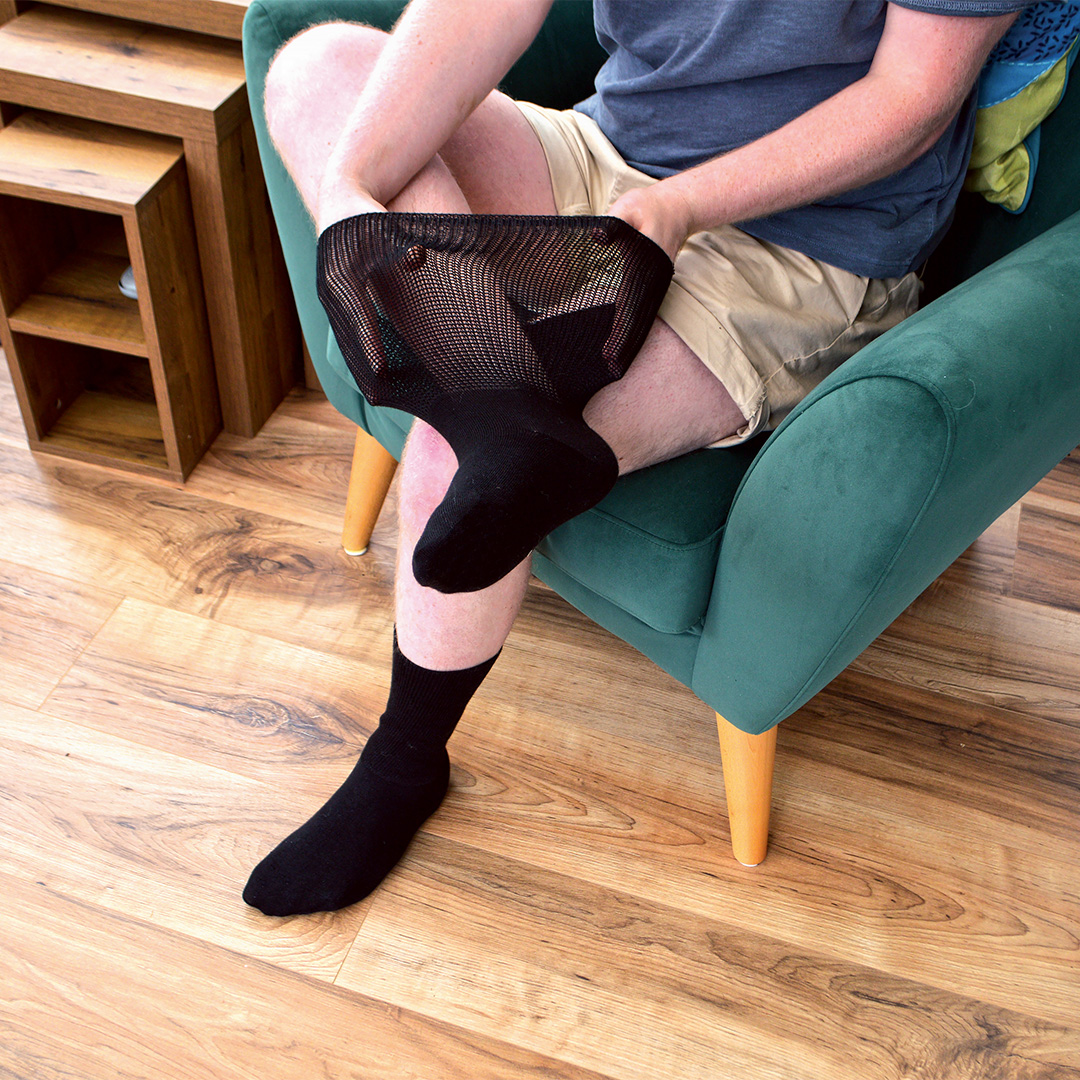Have you ever taken off your socks at the end of a long day, only to find those tell-tale indentations around your ankles? You’re not alone! Many of us wonder, “Why are my socks leaving indentations in my legs?” or “Is it bad if your socks leave indentations?” From dress socks to casual pairs, the reasons behind why socks leave indents in skin can vary. Let’s dive in and find out what those pesky indentations mean and how you could make them go away.

Tight Fitting Socks
If your socks are too snug, they can restrict blood flow and cause pressure points on your legs. This can lead to indentations that may persist for some time. Whilst these marks could be harmless and can go away within a few hours, they could be indicators of peripheral edema, or swelling in your legs. If you frequently notice “socks leaving marks on my legs,” it’s important to consider the fit and elasticity of your socks.
Individual Skin Sensitivity
Some people simply have more sensitive skin than others. This can make them more prone to irritation and indentations from clothing, including socks. If you have particularly sensitive skin, consider wearing socks made from softer, more natural materials, such as bamboo or organic cotton. This can help reduce those uncomfortable socks leaving marks on your legs.
Weight Gain or Loss
Rapid changes in weight can affect how your socks fit. If you gain weight, your socks may become too tight, while if you lose weight, they may become too loose and slide around, causing friction and indentations. Ensuring your socks fit properly and are comfortable can make a world of a difference for your feet, and prevent those unwanted indentations.

Poor Quality Socks
Synthetic fabrics, while often durable, can be less breathable than natural fibres. This can trap moisture and heat, which in turn can lead to irritation and potential indentations. I would personally recommend socks with a high percentage of cotton, merino wool, or bamboo. Socks with a material composition of these fibres will provide a moisture-wicking, breathable, soft, and comfortable experience for your tootsies and help reduce instances of socks leaving marks on your legs.

Allergies
Some people may be allergic to materials used in socks, such as dyes or latex. Allergic reactions can cause skin irritation, redness, and potentially indentations. If you suspect you may have a sock allergy, it’s important to identify the culprit. Try switching to socks made from hypoallergenic materials, such as organic cotton or bamboo. These materials are less likely to cause allergic reactions. Our range of quality cotton and bamboo socks could be your first port of call.. 👀
Edema
Edema, or swelling, is a condition characterised by an excess of watery fluid collecting in the cavities or tissues of the body. It can result from a variety of underlying health issues, including heart, kidney, or liver problems. When dealing with edema, you might often notice your socks leaving more pronounced indentations, as the swelling causes your legs to expand.
Simple remedies, like drinking more water and refraining from water retaining liquids like tea and coffee could help. Read through this very helpful article from the Cleveland Clinic to find out more about Edema.
Dr.Socks, Gentle Grip and IOMI Footnurse are brands of socks we offer that are specialised in providing socks that can help dealing with Edema and swollen legs.
Conclusion
In conclusion, sock indentations on your legs can range from benign to potentially concerning, depending on the cause. Tight-fitting socks are a common culprit, potentially restricting blood flow and leading to brief marks or indicating conditions like peripheral edema. Additionally, factors such as individual skin sensitivity, weight changes, poor-quality socks, and allergies can contribute to these impressions. Opting for softer, natural materials like bamboo or organic cotton, ensuring proper sock fit, and addressing any allergic reactions can alleviate these issues. Persistent or severe cases, particularly those accompanied by additional symptoms, warrant medical consultation to rule out underlying health conditions. Understanding and addressing the root cause ensures both comfort and wellbeing.






 Connor Doughty
Connor Doughty